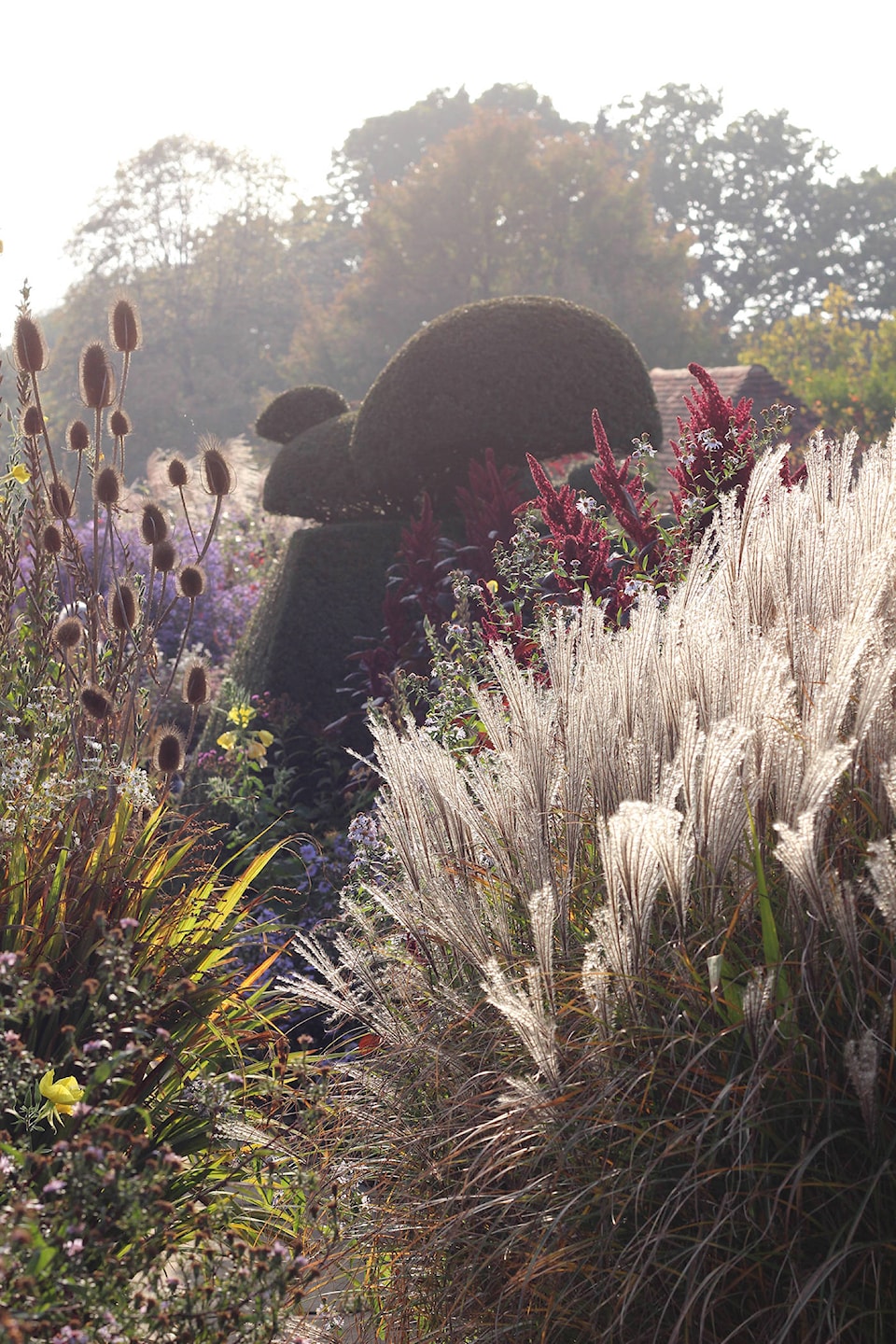1. Encourage Self-Seeders
Have a plant that loves your site? One that has naturalized nicely, but not invaded? In my garden, a biennial from the carrot family appears in odd but welcome locations: Angelica sylvestris ‘Vicar’s Mead’. At Dixter, a five foot high evening primrose (Oenthera) pops up everywhere, a splash of yellow which weaves together the late-season borders. With a staff of five and a handful of student gardeners, the primroses are no accident of Fergus Garrett’s, the head gardener – it’s purely design.
2. Anchor Corners
Consider your paths. Where do they lead to? What plants might signify a transition? A turn? At Dixter, I noticed Astelia being used for its upright silver strap-shaped leaves which like glowing exclamation points, initiated excitement at a turn. Fixed perennials like this add needed structure to seasonal designs, but choose wisely; pick a plant that looks great in at least three seasons. (Astelia is a New Zealand native and with very good drainage and some winter protection, they are viable in our climate.)
3. Push Zonal Boundaries
A banana with roses? It can be done in the south of England and though it sounds ghastly the effect of the large banana leaves acting as a canopy over a herbaceous and semi-tropical planting was worth the trip to Dixter alone. This ‘exotic garden’ is walled/protected from wind, much as many new urban gardens are. Take chances: Colocasia, Nicandra, geraniums, shrubby semi-tropical salvias…with a bit of winter rain/frost protection and a warming climate, who knows?
4. Embrace Outbuildings
That is, enfold them in plants. Going further: who needs walls when you can create visual barriers with green? While we may not have many crumbling old timber buildings, those we do have can be made beautiful by planting around them. Picture this: an old garage, a couple of walls removed, the structural bones in view, the roof intact. Sounds like a lovely place to shelter in the rain. With one path in, and an emerald backdrop…so yes.
5. Make Structure Matter
Whether you have a tiny garden or a vast one, structure matters. Use topiary, or clipped hedging overflowing with arching grasses to contrast hard surfaces. Soften edges with billowy plants.
6. Mix annuals, biennials and perennials
Try Miscanthus sinensis ‘Silver Feather’ is perennial, the teasel – Dipsacus fullonum (considered invasive in BC) is biennial, and the burgundy Amaranthus (a South American crop plant welcomed as a gorgeous autumnal) is annual. Mix it up. Playing across the lines means more opportunities for success.
7. Beguile with Begonias
They’re back! Yes, the fleshy Victorian houseplant that resulted in far too many plant stands, is on the upswing again and frankly, I’m delighted. For diversity of leaf shape and texture, few genera can match Begonias. They’re bedding plants to some, but at Dixter they’re gracing the front door of a medieval home and displayed in a multiplicity of forms – all shaded, potted, and revered.
8. Hit Repeat on a Signature Species (or two)
Crimson Tagetes ‘Red Gem’ (French Marigolds) appeared everywhere at Dixter: in the kitchen garden (they’re edible), mixed in with gorgeously garish dahlias, standing tall in borders. Intentional and in almost every case, perfect, these flowers created repetition and formed a lingering refrain—as did Dixter itself of course. The chorus in my head now? Go back.
Christin Geall is an avid Oak Bay gardener and creative non-fiction writing instructor at the University of Victoria.
